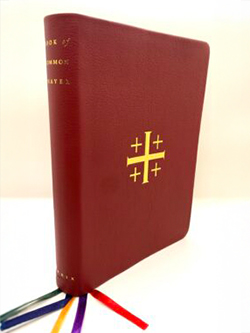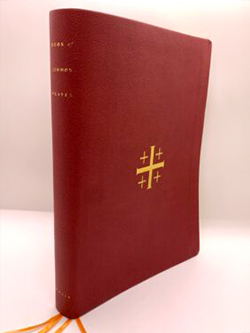Magnify the Lord – Two-Volume Accompanist Edition
$250.00
Two-Volume Accompanist Edition
Imprint: Anglican Liturgy Press (2019)
Size: 8.5″ x 11.0″
Pages: 910 (450 each volume)
3-hole punched, 32-pound paper stock with 60-pound card stock black and white covers
Weight: 6 pounds 14 ounces
Single copies: $275
Availability: anglicanhousepublishers.org
This 21st Century Anglican Hymnal represents an immense achievement in compiling a vast amount of excellent hymnody into one volume. It preserves the best of The Hymnal (1940). It addresses gaps where Scriptural topics that appear frequently in the Eucharistic lectionary are under-represented by corresponding hymns, and it augments the hymnody for liturgical seasons that are under-represented in The Hymnal (1940). It incorporates staple hymns of the Anglican repertoire and the broader Church that do not appear in The Hymnal (1940), such as Be thou my vision and Amazing grace, together with a number of contemporary worship hymns that are well founded in music, theology, and poetry. The principal criteria were:
GOOD THEOLOGY founded in the Holy Scriptures, the historic creeds, The Book of Common Prayer (1662 and 1928) and the 39 Articles of Religion.
GOOD POETRY economical in words, with word sounds artfully deployed.
GOOD MUSIC representing the best of the particular idioms, with melodies that fall within a comfortable vocal range for untrained voices, and that can be sung in parts.
VARIETY that embraces a word diet from milk (“Jesus loves me”) to meat (“Come, ye faithful”) with music that ranges from simple (“It is well with my soul”) to more elaborate (ENGELBERG).
This hymnal gathers the best of past and present hymnody into a single volume intended mainly for parish worship. Its collection of sacred songs is perhaps the finest musical expression of “the beauty of holiness” available to traditional Anglicans today.
Key features of this timeless work include:
- Words that are consistently theologically sound, with everything eminently singable.
- Preservation of the heritage of The Hymnal 1940 and The Hymnal 1982 while adding the best of newer hymns and contemporary worship music.
- All musical styles are specifically included: Plainsong, Victorian hymns, German chorales, Negro spirituals, shaped-note songs, Gospel hymns and folk songs.
- Staple hymns of the wider Church are included, for example, “Amazing Grace!” (omitted from the 1940) and “It is Well with My Soul” (omitted from the 1982).
- Gems of the Anglican tradition are included, in particular: “Glorious Things of Thee are Spoken” (the tunes ABBOT’S LEIGH by CYRIL V. TAYLOR, JERUSALEM and REPTON by Hubert Parry, and the MICHAEL by Herbert Howell).
- Songs are included to address gaps in the 1940 and 1982 hymnals where certain of the lectionary readings and themes lacked corresponding music. These include:
- Hymns explicitly connecting the love of God to love of one’s fellow man;
- Hymns about the miracle healings of Jesus that consider theological dimensions;
- Hymns about righteousness and sin that are pointed and particular in their language;
- Hymns of judgment and imprecation;
- Hymns about the believer’s incorporation into Christ, using the Biblical metaphors of members of the human body or of a vine and branches.
- A Liturgical Index sets this hymnal apart, allowing priests and music ministers to bind hymns closely to the lectionary readings of the entire church year. Suggested are up to four hymns relating to each Collect, Old Testament reading, Epistle lesson and Gospel reading.
- Most of the hymns and many of the contemporary worship songs are arranged in four parts, so that congregations can read music and sing in full harmony if desired.
- Improving upon the format of The Hymnal 1940 this hymnal presents more of the words of hymns within the musical staves, making it easier for the eye to travel between words and notes.
- Guitar chords are supplied for hymns where appropriate.
- Keyboard accompaniments appear on all pages with the hymns, permitting a keyboardist to play directly from this hymnal.
- Music ministers will appreciate this hymnal’s thorough explanations of the traditional Anglican chant and simplified Anglican chant contents.
- In addition to four musical settings of the historic Holy Communion service (1662 and 1928) The Book of Common Praise also includes a complete musical setting of the Holy Communion ordo as approved by the Anglican Church in North America, making this hymnal an expression of ecumenical unity among traditional Anglicans.
Additional information
| Weight | 6.455 lbs |
|---|







